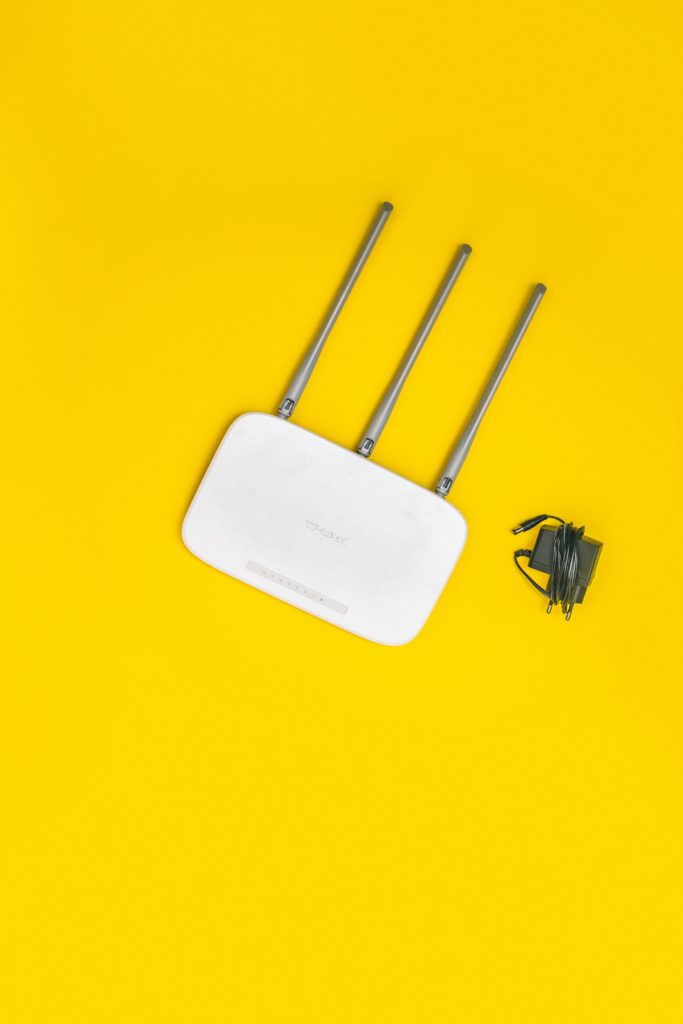We are all used to wireless communication by now. Bluetooth, 2.4 Ghz wireless, infrared and Wi-Fi technologies are some of the wireless technologies we use today. These technologies have made the use of cables and wires as a means of connecting different devices and exchanging data redundant. For example, you can connect your computer or laptop to peripherals such as mouse and keyboard via Bluetooth. Although all these are wireless technologies, they work differently. Let’s look at each one of them in detail to know how they differ.
What Is Bluetooth?

Bluetooth is a short-range wireless technology that enables sharing of data between Bluetooth enabled devices using UHF radio waves. You can use Bluetooth to make phone calls or listen to your favorite music from your headsets without connecting any cables. Bluetooth was named after a Danish King named Harald Bluetooth for his efforts in uniting the Scandinavian countries in the 10th century.
How Bluetooth Works
Bluetooth was developed in 1994, as a wireless replacement of cables. Bluetooth operates in the unlicensed ISM band, centered at 2.4 gigahertz and sends and receives radio waves in a band of 79 different channels Bluetooth employs a frequency hopping technique which minimizes interference and fading because each device uses one of the available 79 channels. This frequency hopping spread spectrum ensures that your Bluetooth device can’t be hacked.
The process of connecting two Bluetooth devices is called pairing. Bluetooth devices automatically detect and connect to one another. When two or more Bluetooth devices are connected, they form a personal area network called a piconet. One device acts as the master and controls the other connected devices. These other devices are also known as slaves. Two or more connected piconnets form a scatternet.
Bluetooth Range
The class of Bluetooth devices determines its range. Most Bluetooth devices are Class 2. This means that they have a maximum range of up to 30 feet. Class 1 devices can operate at a distance of up to 300 feet. Class 3 Bluetooth devices have a maximum range of 3.3 feet. This is why they are uncommon. Even if Bluetooth devices belong to different classes, they can still connect and exchange data. However, they will revert to the lowest class. For example a class 1 phone and a class 2 phone will only work up to 30 feet. Other factors that affect the Bluetooth range include:
- The output power of the transmitter
- The sensitivity of the receiver
- Antennas
- Physical obstacles in the transmission path (Interference).
Transmission Speed of Bluetooth
Bluetooth transfers data at a speed of 1 to 3 Mbps. The common effective speed is 3Mbps.
Bluetooth Uses and Applications
Bluetooth has a myriad of uses and applications. Here are some of them.
- Wireless control and communication between a mobile phone and a hands-free headset.
- Wireless control and communication between a smartphone and a Bluetooth compatible car stereo system.
- Wireless control and communication between Android and iOS device phones, portable speakers, and tablets.
- Wireless communication between a smartphone and a smart lock.
- Wireless streaming o audio to headsets
- Wireless communication with computer peripherals such as the mouse, keyboard and printer.
- For sending adverts from a Bluetooth enabled advertising board.
- For dial-up internet access using a smartphone as a wireless modem
- Bluetooth is used in real timed location systems to track and identify locations of items
- Connecting motion controllers to a pc using VR headsets.
Advantages of Bluetooth
Here are the advantages of Bluetooth.
- There is minimal interference from other devices.
- You can easily upgrade your Bluetooth device to the latest version
- Bluetooth consumes less power
- Bluetooth covers a wider range than infrared
- Bluetooth technology is now available in most of the devices we use daily such as smartphones and tablets.
- Due to its simplicity, Bluetooth is easy to use.
Disadvantages of Bluetooth
Let’s now look at some disadvantages of Bluetooth.
- There are security concerns such as attacks by hackers when using Bluetooth.
- Bluetooth can only allow short range exchange of data.
- Bluetooth has a low bandwidth compared to Wi-Fi
- Bluetooth transfers data at lower speeds than Wi-Fi direct and thus not ideal for transferring large files of data.
- Not all Bluetooth devices are compatible with each other. This i.e. especially relatable to Bluetooth 4.0 and Bluetooth low energy.
What Is 2.4GHz Wireless?
Most of the networking frequencies are found on the unlicensed 2.4GHz band. Computer equipment that use 2.4GHz range from Wi-Fi dongles found on notebook laptops to purpose built point to point Ethernet Bridging Kits. Other products that use this frequency include Microwave ovens, Wireless phones, Video devices among others. There use causes interference.
How 2.4GHz Works
The IEEE 802.11 standard governs the 2.4 GHz band. Most 2.4GHz devices adhere to the following standards.
- 802.11b using DSSS, < 20Mbps per data stream and up to est. 140m
- 802.11g using OFDM, up to 54Mbps per data stream and up to est. 140m
- 802.11n using OFDM, up to 150Mbps per data stream and up to est. 250m
2.4 GHz wireless Range

For network purposes, 4GHz can cover a large area and thus it has become popular in many homes and small enterprises. If you are using high gain antennas and point to point Ethernet Bridges, this technology can span thousands of kilometers.
2.4 GHz Transmission Speed
Under ideal conditions 2.4 GHz supports up to 450 Mbps or 600 Mbps. However, the maximum speed depends on what wireless standard a router supports. Keep in mind that the data transfer rates advertised on devices are usually less when put in practice. This is because:
- Each data packet has more data than what you are trying to transfer such as the IP, MAC, and TCP headers, preambles, etc.
- Transmitters wait for a while before sending or receiving data packets to see if another network is trying to use the same channel and family.
2.4 GHz Uses and Applications
802.11 Wi-Fi connections are popular in offices and homes because they eliminate the use of cables when sharing scanners, printers and the internet. In small offices, you can use devices such as Wi-Fi routers and lower end Access Points to create wide internet access. You can boost the signal using small indoor antennas.
Point to Point Ethernet Bridges is the implementation of Fixed Wireless Data links between two computers. It can cover kilometers and thus uses more expensive equipment with high gain antennas. The wider range is achieved because it uses dedicated microwave signals over paths that have a clear line of sight. They are mostly used in towns and cities to link different offices instead of installing an expensive cable network.
Advantages of 2.4 GHz Wireless
The main advantage of 2.4GHz Wi-Fi WLAN is that they are easy to set up and they cover a wide range. Besides you can connect many user to this network making it ideal for use in small offices
Disadvantages of 2.4 GHz Wireless
2.4GHz wireless networks are prone to interference because many wireless consumer products use this frequency. This can result in signal loss and disruption of the network speed and reliability.
Sending videos using 2.4GHz wireless networks is usually a problem because they operate on 10 MHz in bandwidth. The receiver may receive the video but with no or blurred audio.
What Is Infrared?
Infrared (IR) wireless is the use of wireless technology in devices to convey data through infrared radiation. It is commonly used for communication between electronic devices. IR can be used for both short range and medium range communication and control. Infrared is a form of electromagnetic radiation and is not visible to the naked eyes.
How Infrared works
Most Infrared systems work in line of sight. This means that there must be a visually unobstructed straight line through space between the transmitter and receiver. Other IR devices operate in diffuse or scatter mode. These systems can function even if the source and destination are not directly visible to each other. An example is a television remote control box.
Infrared Range
Infrared has a very short range. It is used to transfer data not more than 5 meters, and often closer to each other.
Transmission Speed of Infrared
Advanced infrared have a transmission speed of up to 12.5 gigabits per second over short distances and speeds of up to 1 gigabit per second for distances up to 30 meters.
Infrared Uses and Applications
Infrared is often used in stationary electronic devices that convey data through infrared radiation. The devices must be close to each other. The most common infrared gadget is the television remote. However, it is now more common and is popular in other applications such as wireless keyboards, instruction detectors, medium range line of sight laser communication, robot control systems, modems, headsets among others.. Because of the line of sight limitation, infrared wireless is often used in devices that are placed close to each other.
Advantages of Infrared
Here are advantages of infrared.
- Infrared technology covers a short range and is thus more secure. It is difficult to eavesdrop on a well-engineered line of sight IR laser communication link.
- Infrared has a faster time
- Batteries used in infrared devices last longer.
- They are small in size and less expensive.
- It provides high repeatability
Disadvantages of Infrared
Infrared technology has the following disadvantages.
- Infrared wave at high power can damage the eyes
- The waves can be damaged by dust, smoke, sunlight etc.
- It mostly requires a line of site between the sender and receiver.
- It can only handle one device at a time.
- It’s only meant for low data transfer
- Unlike radio frequency, IR wireless cannot pass through walls. This means that IR communication is not possible between different rooms in a house.
What Is Wi-Fi?

Wi-Fi is a wireless networking technology that allows mobile devices and computers to interface with the internet. It allows the connected devices to exchange data with one another creating a network. The router is the one that enables internet connectivity.
How Wi-Fi Works
Wi-Fi works based on the same principle as other wireless devices. It uses radio frequencies to send signals between devices. Wi-Fi transmits data in the 2.4 GHz and 5GHz. However, there are many others used in more niche settings. These waves are similar to your microwaves frequency. So, how does Wi-Fi work?
Although we use Wi-Fi to access the internet access on mobile devices such as smartphones, tablets or laptops, Wi-Fi is only used to connect to a router or access point which in turn provides internet access.
Wi-Fi Range
The Typical range of a standard Wi-Fi network can reach up to 100 meters in the open air. However, buildings and other materials can reflect the signal making it weak. The signal can also be affected by the strength of the antenna and frequency broadcast. Higher ranges like 5GHz have shorter effective ranges than 2.4GHz.
Wi-Fi Transmission Speed
The maximum theoretical speed of a Wi-Fi network is indicated by its Wi-Fi standard. The fastest standard so far is the 802.11ax introduced in 2019. The table below shows the various Wi-Fi standards and transmission speed.
| Theoretical Speed | Actual speed | |
| 802.11b | 11 Mbps | 5.5 Mbps |
| 802.11a | 54 Mbps | 20 Mbps |
| 802.11g | 54 Mbps | 20 Mbps |
| 802.11n | 600 Mbps | 100 Mbps |
| 802.11ac | 1,300 Mbps | 200 Mbps |
| 802.11ax | 10 Gbps | 2 Gbps |
Wi-Fi Uses and Applications

Most smart devices rely on Wi-Fi connectivity for a steady and robust connection to the internet. All modern smartphones support Wi-Fi, so do tablets, laptops, and some desktops. You can add Wi-Fi to your computer using dongles.
Smart TVs come with support for Wi-Fi connectivity. Other uses cases include mart fridges, cameras, game consoles, digital radios, printers, and even cars.
Advantages of Wi-Fi
Here are the advantages of using Wi-Fi.
- Convenience: Wi-Fi allows multiple users to connect through the same network. It is also simple to set up a Wi-Fi connection compared to wired networks which need more time to configure.
- Mobility: Unlike wired connection, Wi-Fi does not restrict your movement. You can use Wi-Fi as long as you are in the range of a Wi-Fi Access Point.
- Productivity: In the office setting, Wi-Fi enables the staff to accomplish their assigned tasks enabling them to deliver their timely targets and works and thus increase the overall productivity of the company.
- Deployment: Installing a Wi-Fi access point is easier compared to a wired network connection. This is because cables operate different switches and run in different locations.
- Expandability: It is easier to add new users to a Wi-Fi network as you do not need to install new equipment. This saves time.
- Cost: Wi-Fi is cost effective compared to wired connections. With Wi-Fi, you cut down on the expense of wiring and maintenance,
Disadvantages of Wi-Fi
Wi-Fi also has its drawbacks. Here are some of them.
- Security: Although the Wi-Fi network is encrypted, it is still vulnerable to hacking. Since it is wireless it is susceptible to eavesdropping. Avoid using public networks because public Wi-Fi networks are open to anyone. Hackers can impose their fake networking ID.
- Range: Wi-Fi has a limited range. Typically around 100- 150 feet. The strength of a Wi-Fi signal reduces as you move further away from the access point.
- Speed: Wi-Fi has far much low speeds compared to wired connections. You can experience a drastic reduction in speed as more devices get connected.
- Reliability: The Wi-Fi network is prone to interference because the 2.4 GHz frequency band has high chances of getting hindered due to electromagnetic waves and other obstacles. As a result you can experience connectivity issues and weak signal strengths.
- Bandwidth: The Wi-Fi bandwidth gets weaker as you add more devices. When the bandwidth gets limited, you experience low speeds.
What About Wi-Fi Direct?
Although Wi-Fi is primarily used to getting connected online, it can be used to connect devices directly through what is known as Wi-Fi Direct. Wi-Fi is more comparable to Bluetooth functionality than the standard Wi-Fi. You do not need Wi-Fi to connect devices via Wi-Fi direct. Wi-Fi Direct devices emit a signal that let other devices know that a connection can be made. Users can receive an invitation to connect or can view available devices and request a connection.
Wi-Fi Direct connections are faster compared to Wi-Fi connections. Although Wi-Fi Direct works similarly to Bluetooth Wi-Fi Direct can accommodate more than 50Mbit/s and can achieve speeds of 2Gbits/s. This is the ideal speed for optimized experiences of smart TVs, video games, and high resolution games and videos. However, faster speeds mean more energy consumption. Consider this before using Wi-Fi Direct especially with limited battery power on mobile devices.
This brings us to the end of our comprehensive blog article on wireless networks. I hope that you now have a better understanding of each one of them. Keep it here for related content.
